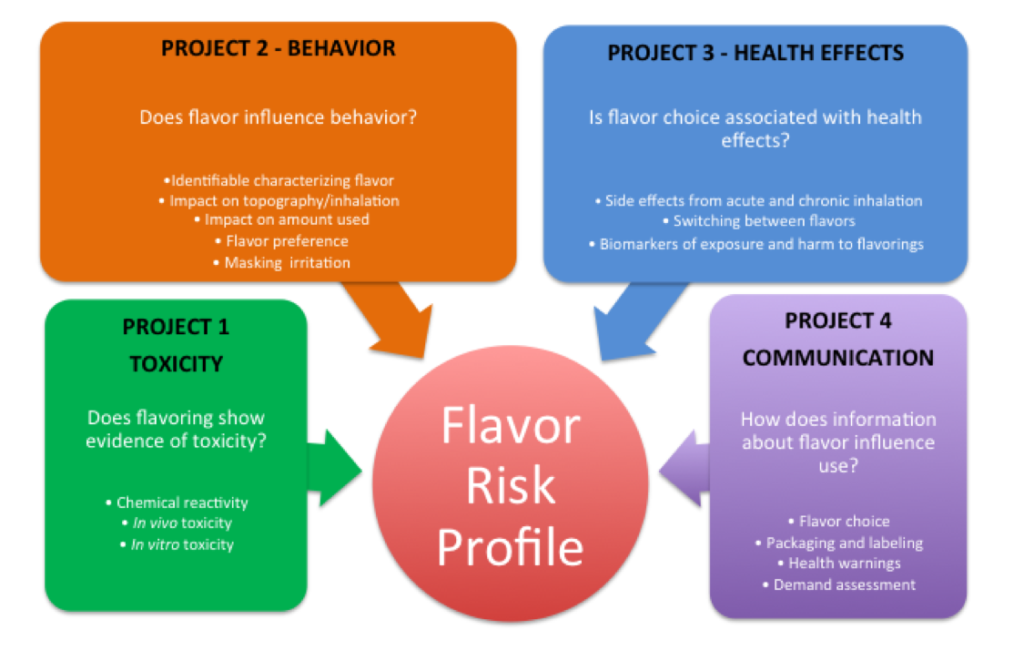CRoFT Mission and Goals
The overarching theme of this TCORS is the effects of flavors in tobacco, with an end goal of developing a scientific framework for evaluating the potential effects of flavors on all tobacco product users.
The Western New York-based Center for Research on Flavored Tobacco Products (CRoFT) will examine the scientific domains of Toxicity, Behavior, Health Effects, and Communications with respect to flavorings used in tobacco products.

ENDS solution will serve as an exemplar product to frame this research, with the vision that this framework could be broadly generalizable to other flavored tobacco products. Our research teams combine recognized tobacco regulatory science, biobehavioral, and communications research expertise with top-notch inhalation toxicology and exposure science expertise, drawing on available resources such as CTSI, regulatory science, leading education and training programs, and extensive mentoring opportunities. This is drawn together by a common interest in the impact of flavors in tobacco on health of individuals and the population as a whole. We have chosen to focus on flavors in tobacco products for the following reasons:
- Emerging tobacco products such as cigarillos, hookah, and ENDS are marketed in an array of flavors and account for an increasing share of overall tobacco use
- Many flavoring ingredients, while often promoted or labeled as ‘Generally Recognized As Safe (GRAS)’ have not been evaluated for inhalation toxicity
- Flavors appear to play an important role in attracting users to these emerging tobacco products
- FDA’s scope of regulatory authority allows it to address flavored tobacco products in a number of ways, ranging from packaging and labeling rules, to restricting the use of specific flavorings via product standards, and as far as banning characterizing flavors in tobacco products
- Data are needed to understand how consumers perceive and use flavored tobacco products and whether this has implications for the relative health effects of flavored versus unflavored products
We use the terms ‘flavor’ and ‘flavoring’ – we view these as having distinct meanings. When we say flavor we are referring to a name or category, what might be termed the ‘characterizing’ quality. Some examples include Cherry, Chocolate, and Piña Colada. When we refer to flavoring we are discussing a particular chemical or class of chemicals that is used to impart a taste or odor. Some examples include vanillin, limonene, isoamyl alcohol, and benzaldehyde. To promote integration across projects, each will address members of different flavor groups, and each flavor group may contain one or more flavorings.

